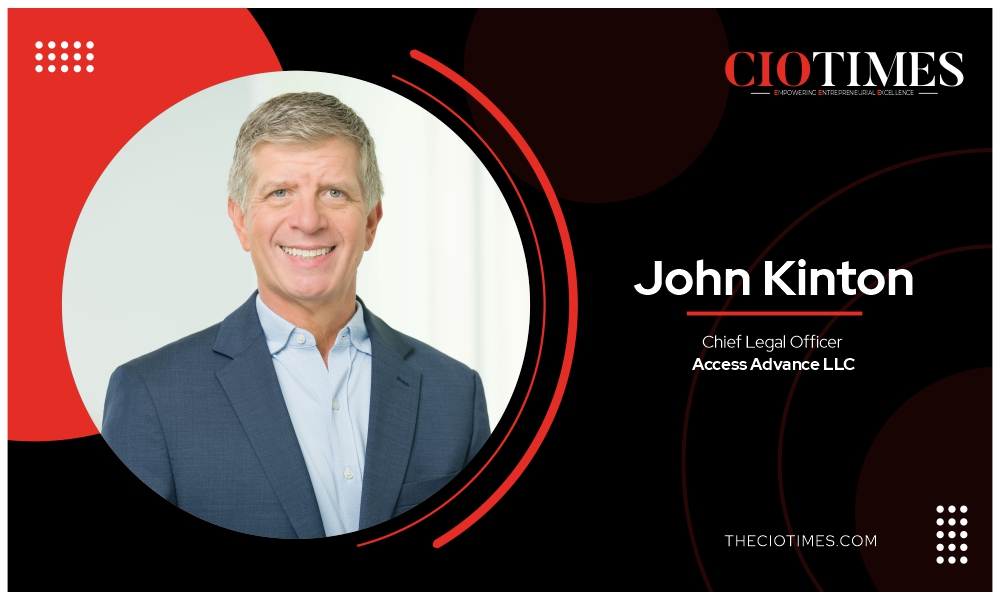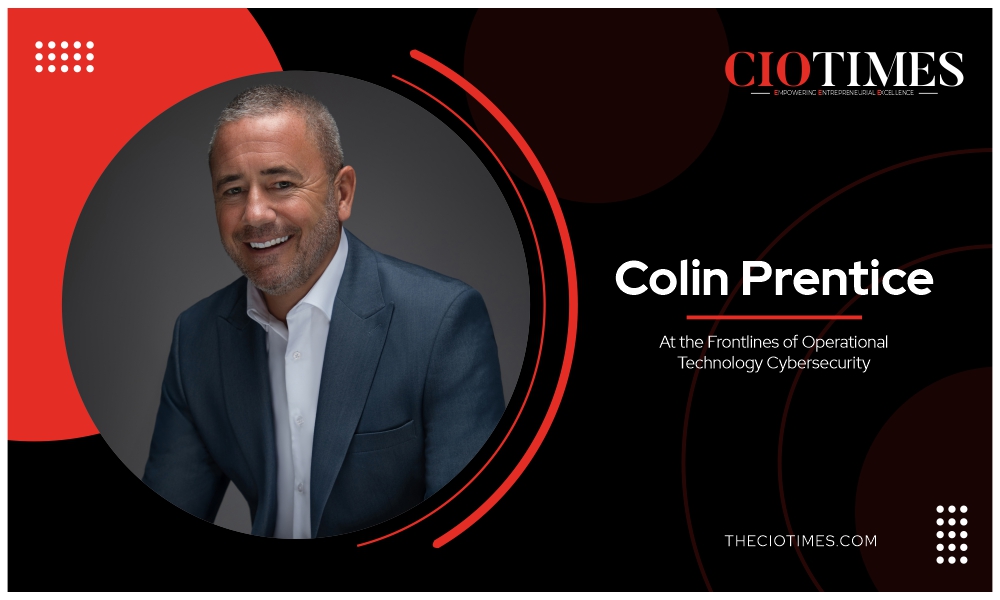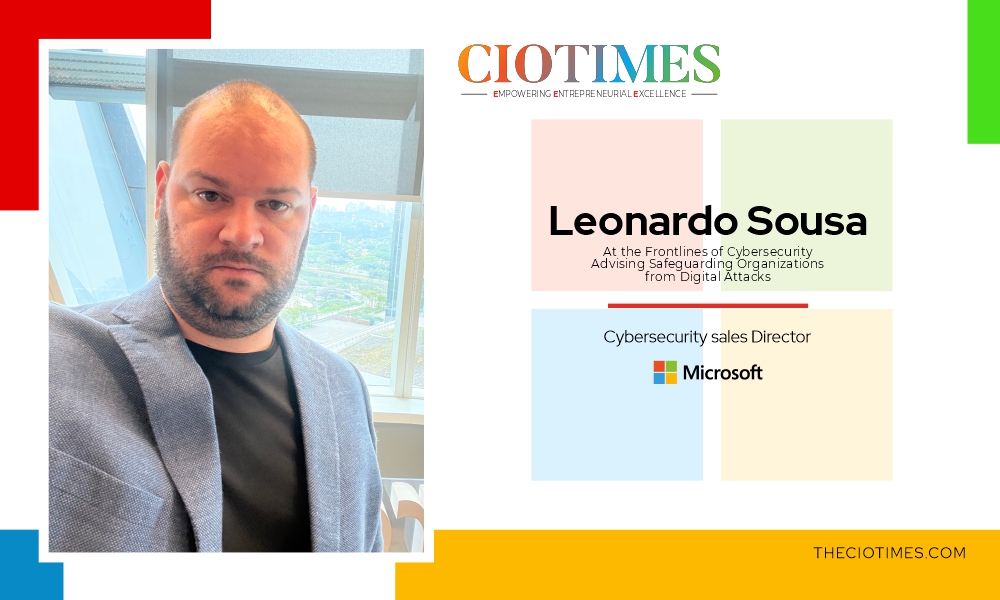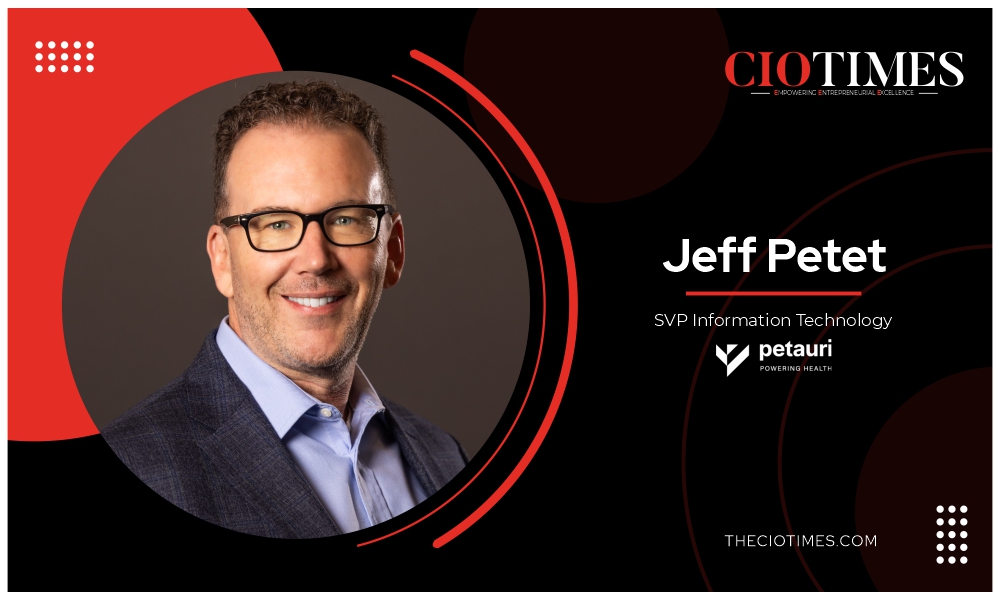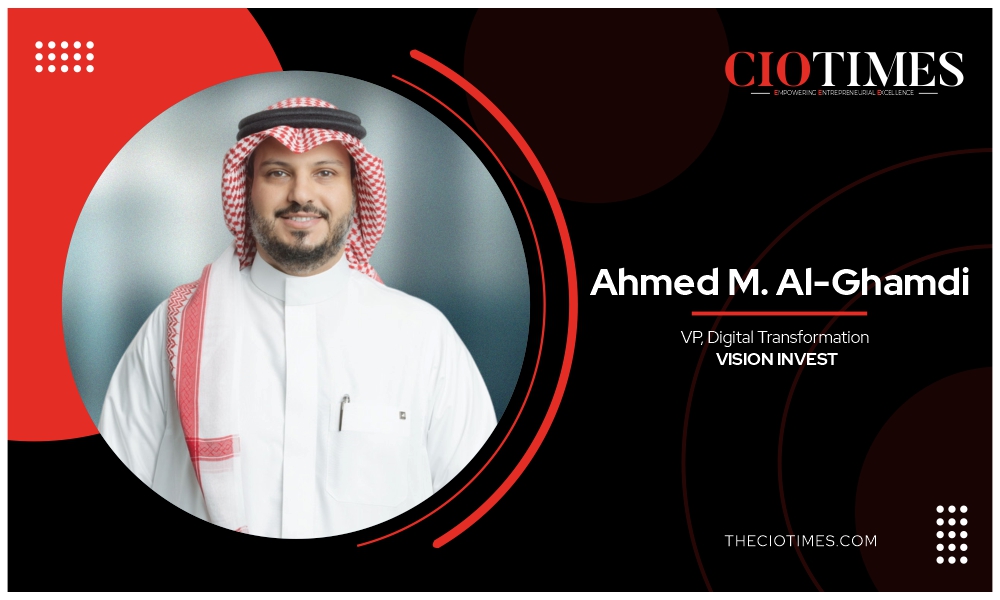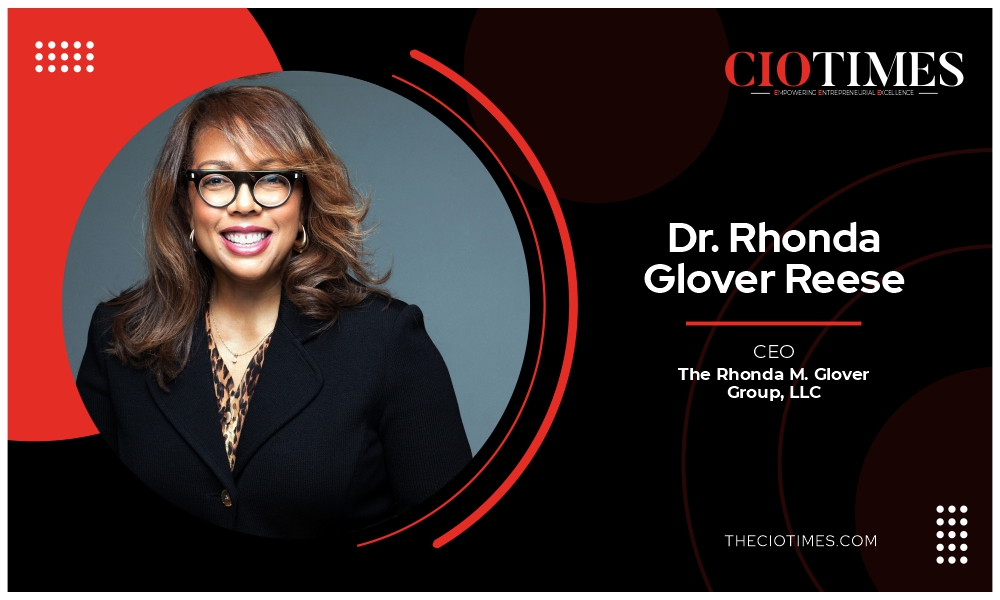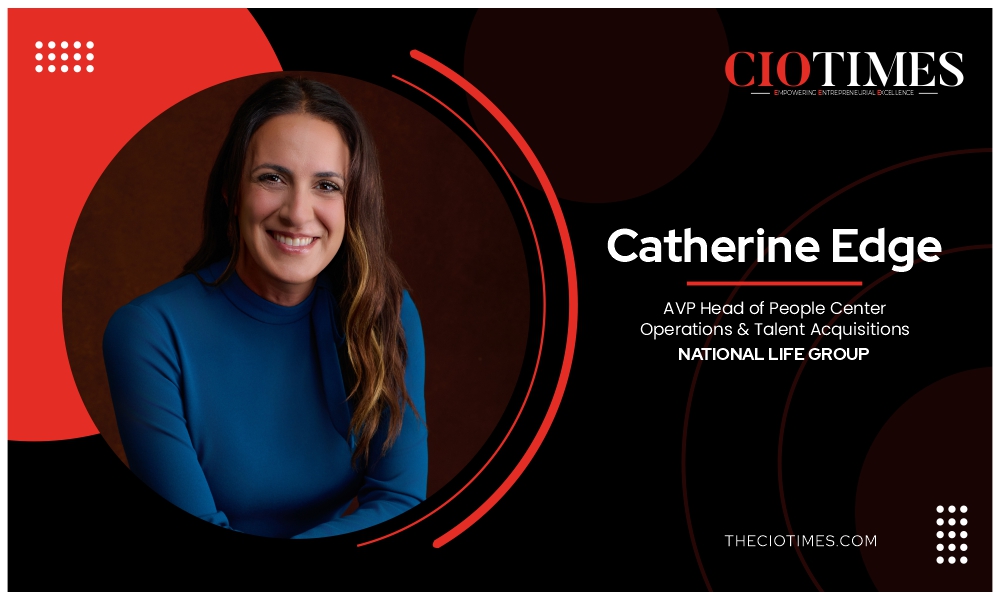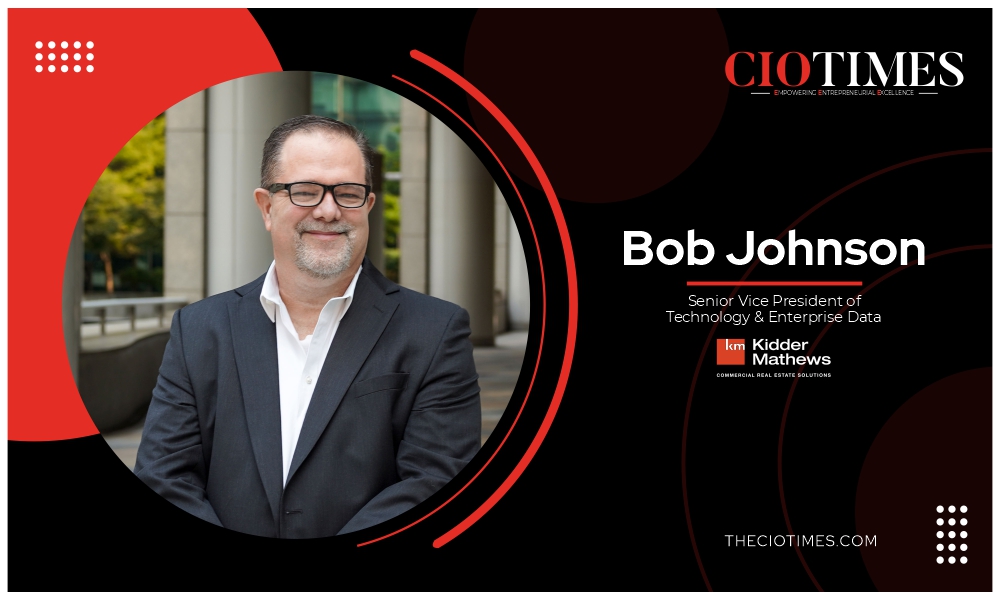In the rapidly evolving landscape of Saudi Arabia’s digital economy, few leaders embody the spirit of transformation as compellingly as Ahmed M. Al-Ghamdi. As the Vice President of Digital Transformation and Chair of the AI Committee at Vision Invest, he brings over two decades of experience from industry giants such as Saudi Aramco, Baker Hughes, and Halliburton, combining technical depth, strategic foresight, and operational agility that positions him at the forefront of innovation.
Since joining Vision Invest, an infrastructure investment holding company headquartered in Saudi Arabia, Ahmed has spearheaded a comprehensive digital overhaul, modernizing the company’s IT infrastructure by embedding AI and machine learning across business functions, and has successfully fostered a culture of data-driven decision-making. Ahmed is currently Chair of the AI Committee where he underscores a pivotal role in aligning technology with Vision Invest’s broader mandate: delivering sustainable value through impact investments that support Saudi Arabia’s Vision 2030.
Ahmed’s leadership is not just about systems and software; it is about reimagining possibilities. By championing cross-functional collaboration and the adoption of ethical AI, he is helping Vision Invest evolve from a traditional investment holding company into a digitally empowered catalyst for regional growth. Ahmed’s vision is clear: transformation is not a destination, it is a mindset.
Bridging Industries, Building Intelligence
From the oil and gas fields of Saudi Arabia to the boardrooms of national and international organizations, Ahmed’s career trajectory has consistently centered on one mission: unlocking operational value through transformative technologies. Beginning with industry stalwarts like Saudi Aramco, Halliburton, and Baker Hughes, Al-Ghamdi architected a breakthrough digital infrastructure, including the ambitious interlinking of over 200 drilling rigs with Aramco’s central systems. This early success sharpened his instinct for extracting intelligence from complexity, an ethos that has guided his leadership ever since.
Today, Ahmed is steering a modernization effort that touches every corner of the enterprise, from automation and analytics to AI ethics and strategic foresight. His work blends global best practices with a localized innovation lens, reflecting Saudi Arabia’s accelerating pivot toward digitization under Vision 2030. His recent recognition as AI Leader of 2025 by the Arab Leaders Organization is a timely affirmation of his influence across the regional tech landscape.
Complementing his corporate leadership is a deep commitment to cultivating the next generation of Saudi innovators. Ahmed actively mentors emerging talent, seeing knowledge-sharing and coaching as not just a responsibility but as a source of joy and passion. This led him to launch Refaq.ai, a platform designed to connect seasoned professionals with young minds eager to navigate the evolving tech ecosystem. For Ahmed, mentorship is not a side pursuit; it is an extension of his vision for a smarter, more inclusive future.
Leadership Philosophy in Action
Ahmed has forged his leadership style in environments where failure was not an option and technology had to perform under relentless pressure. His formative years in the oil and gas industry instilled in him a deep respect for operational resilience and scalability, values that now underpin his digital strategy. In the high-stakes world of drilling operations, systems had to run 24/7, flawlessly. That mindset, where robustness and reliability are non-negotiable, continues to guide his approach to enterprise-wide transformation.
Ahmed’s tenure in the oil and gas industry also refined his ability to navigate cross-functional collaboration. Often positioned at the intersection of engineering, geology, manufacturing, Information technology, and business strategy, he became a natural translator between disciplines, a skill that has become indispensable in his current role. In his current role, Ahmed actively ensures that digital initiatives are not siloed within IT but are shaped by insights from every department, fostering a culture where transformation is truly organization-wide.
His leadership principles are anchored in integrity, impact, and inclusion. He leads with a clear sense of purpose, empowering teams and championing decisions that deliver long-term value. Importantly, Ahmed is a vocal advocate for ethical AI, emphasizing transparency, responsible governance, and the belief that technology must serve people, not the other way around. This philosophy is reflected in his AI strategy, which strikes a balance between innovation and accountability, ensuring that every digital advancement aligns with human-centric values.
Ahmed’s journey, from managing building and managing data centers, real-time data project across 200+ drilling rigs to chairing the AI Committee at one of Saudi Arabia’s most strategic investment firms, is a testament to how technical rigor, collaborative agility, and principled leadership can converge to drive meaningful transformation.
Investing in Transformation
Today, Ahmed plays a pivotal role in steering one of Saudi Arabia’s most forward-looking investment firms toward a tech-enabled future. His mandate goes beyond digital transformation, it’s about embedding artificial intelligence as a strategic enabler across the organization. He is leading efforts to modernize IT and digital infrastructure, deploy machine learning solutions, and build internal AI capabilities that empower smarter decision-making. Ahmed’s work on the AI committee’s includes crafting a scalable AI adoption roadmap, supporting portfolio companies with intelligent tools, and establishing governance frameworks that ensure ethical, transparent, and responsible AI use.
Under his leadership, digital transformation functions as a strategic nerve center, aligning innovation with business priorities while safeguarding data integrity and regulatory compliance. This includes regular progress reviews, cross-functional collaboration, and the development of success metrics to measure AI’s impact across operations. Ahmed’s approach reflects a deep understanding of both the technical architecture and the human implications of AI, making him a key architect of Saudi Arabia’s digital future.
AI for National Impact
At the core of Saudi Arabia’s ambitious transformation lies Vision 2030, a national blueprint designed to diversify the economy, empower the private sector, and position the Kingdom as a global leader in innovation and sustainability. This isn’t just a guiding framework, it’s a foundational ethos. As Ahmed puts it: “Vision 2030 is a huge part of our DNA and purpose.” The company sees itself not merely as a participant but as an executor of the Vision, translating national goals into tangible infrastructure, investment, and technological outcomes.
Ahmed is entrusted with the development of a scalable AI roadmap that integrates intelligent systems across investment evaluation, infrastructure planning, and operational efficiency. These efforts directly support Vision 2030’s pillars, particularly in digital transformation, smart city development, and data-driven governance. By deploying AI to optimize resource allocation and embed smart solutions into infrastructure, his team is helping shape urban environments that are more connected, resilient, and citizen-centric.
However, Ahmed’s vision goes beyond technology. He blends deep industry knowledge with an entrepreneurial mindset, proactively leading change rather than reacting to it. His commitment to ESG principles ensures that every investment delivers both financial returns and sustainable development. From water and energy to healthcare and logistics, as a leader, Ahmed prioritizes long-term impact, aligning with Vision 2030’s emphasis on inclusive growth and environmental stewardship.
Ahmed’s personal passion as a Saudi professional adds a layer of authenticity to this mission. He views success not just in terms of profit, but in how effectively it contributes to the Kingdom’s transformation. “Our success is ultimately measured by how much we help the country achieve its Vision,” he shares.
From Tech Upgrade to Cultural Shift
Digital transformation, believes Ahmed, must not be treated as a one-time technology upgrade, it is effectively a strategic cultural evolution. As a mentor, he advises embracing a holistic approach that builds digital muscle across people, processes, and platforms. This philosophy recognizes that true transformation requires more than new tools, it demands a mindset shift across the organization.
Ahmed has led the overhaul of legacy systems, replacing fragmented infrastructure with scalable, cloud-based solutions that support agility and interoperability. His team has launched AI pilot programs that target high-impact areas such as process evaluation, workflow automation, and predictive analytics, each designed to validate use cases before scaling enterprise-wide. These pilots have not only improved operational efficiency but also fostered a culture of experimentation and data-driven decision-making.
Cybersecurity has been another cornerstone of the transformation agenda. He has helped strengthen cyber defenses, implementing robust governance frameworks, proactive threat monitoring, and employee training programs to mitigate risks in an increasingly digitized environment. These efforts align with national priorities, as Saudi Arabia continues to invest in cybersecurity infrastructure to support its digital economy and infrastructure.
Of course, the journey has not been without its challenges. Change resistance, especially among legacy teams, and talent gaps in emerging tech areas initially slowed momentum. But Ahmed’s leadership emphasized clear communication, ongoing training, and cross-functional alignment, turning these hurdles into stepping-stones. By fostering a shared vision and empowering teams with the right tools and knowledge, he has cultivated a transformation-ready culture.
This people-first approach ensures that technology serves as an enabler, not a disruptor. It’s a model that reflects Ahmed’s belief that digital transformation is ultimately about empowering people to operate smarter, faster, and more collaboratively.
Rewiring Investment: A Tech-Led Evolution
The investment sector is no longer edging into the future; it is charging headlong into it. As Ahmed puts it, “Technology is not just about enabling innovation; it is reframing how value is assessed and built.”
AI is doing more than crunching numbers. It is powering predictive analytics, decoding market sentiment in real time, and customizing investment strategies at scale. Blockchain, too, has graduated from theory to traction, particularly in private markets, where its transparency and traceability are redefining trust.
Ahmed also points out the rise of ESG intelligence. Sustainability metrics, once side notes, are becoming decisive factors in asset selection and portfolio construction. Investors now seek environmental and social indicators with the same rigor once reserved for financials.
What is striking, he feels, is the emergence of digital twins and IoT as infrastructure game-changers. By simulating asset behavior and gathering granular performance data, these tools help investors preempt risk and optimize returns before a single dollar moves.
The most quiet transformative shift, he shares, is automated due diligence. AI-backed platforms are streamlining the legal, financial, and market review process, accelerating deal velocity and minimizing friction.
The net effect is not incremental; it is in fact architectural. The very scaffolding of investment logic is being rebuilt with technology at its core. And for leaders like Ahmed, this is not a threat; it is an invitation.
Future-Proofing Investment
Technology and artificial intelligence are not simply operational tools. Ahmed makes sure to use them as strategic imperatives. His leadership is about actively guiding firms to evolve as an AI-enabled entity, embedding intelligent systems into every layer of its decision-making architecture. This transformation is not a distant ambition: it is already underway, with AI and advanced analytics becoming integral to daily operations, from investment evaluation to portfolio optimization.
His focus is on drafting a long-term strategy built on a cloud-based digital infrastructure that connects ecosystems seamlessly, enabling real-time data access, predictive modeling, and scalable automation. One of the most forward-looking initiatives under Ahmed’s leadership is the pilot deployment of generative AI for scenario planning and knowledge management. These tools allow users to simulate complex market conditions, anticipate risk trajectories, and refine strategic foresight, aligning perfectly with Saudi Arabia’s push toward a data-driven, AI-powered economy. By leveraging generative AI, one can explore multidimensional futures, test hypotheses rapidly, and democratize strategic insight across teams.
But with innovation comes responsibility. Ahmed’s team is equally focused on strengthening governance frameworks, including:
Robust data governance to ensure integrity, traceability, and ethical use of information
Cybersecurity infrastructure that protects digital assets and stakeholder trust
Audit oversight mechanisms that align with regulatory standards and internal accountability
Ahmed’s vision is clear: within a few years, every major decision will be informed by digital insight, supported by a resilient tech backbone, and governed by principles of transparency and trust. This isn’t just about future-proofing the business; it is about redefining what it means to lead in the investment and infrastructure sector.
The Skillset That Powers Transformation
In the fast-moving world of AI and digital transformation, technical proficiency is just the starting point. According to Ahmed, what truly distinguishes impactful professionals is their ability to translate technology into business value, bridging the gap between innovation and outcomes.
While Ahmed leads enterprise-wide modernization, he also emphasizes a multidimensional skillset that blends strategic thinking, ethical awareness, and adaptive learning. Here is how he breaks it down:
Data Literacy: The ability to interpret, visualize, and act on data is foundational. Whether evaluating investment performance or optimizing infrastructure, professionals must be fluent in data-driven decision-making. This includes understanding data quality, governance, and the nuances of analytics tools.
AI Ethics: As AI becomes embedded in core business functions, ethical considerations are no longer optional. Ahmed champions responsible AI use, effectively ensuring transparency, fairness, and accountability in every deployment.
Professionals must be equipped to assess bias, safeguard privacy, and align AI systems with human values.
Prompt Engineering: With the rise of generative AI and AI agents, knowing how to communicate effectively with large language models is becoming a core competency. Prompt engineering enables teams to extract meaningful insights, automate tasks, and accelerate workflows, thus turning AI from a novelty into a strategic asset.
Change Leadership: Digital transformation is as much about people as it is about platforms. Ahmed stresses the importance of guiding teams through the change. Building alignment, fostering resilience, and cultivating a culture of continuous improvement are where leaders must be able to inspire, communicate, and adapt.
Curiosity and Continuous Learning: In a field that evolves by the minute, curiosity isn’t just a trait; it is a survival skill. Ahmed encourages professionals to stay curious, experiment boldly, and embrace lifelong learning. This mindset fuels innovation and keeps organizations ahead of the curve.
This holistic approach to capability-building reflects Ahmed’s broader philosophy: technology must serve people, not the other way around. He ensures that this ethos shapes a new generation of talent, one that is not only technically sharp but also ethically grounded, strategically agile, and relentlessly curious.
AI as a Strategic Engine for Infrastructure, Investment, and Ethics
For Ahmed, AI is a strategic engine reshaping how infrastructure is planned, financed, and governed. As he leads digital transformation across complex portfolios and organizations, Ahmed sees three AI trends as game-changers:
Generative AI for Strategic Modeling: From scenario planning to investment simulations, generative AI is enabling leaders to visualize outcomes, stress-test assumptions, and optimize capital allocation. It is not just about faster modeling, it is about smarter foresight.
Predictive AI for Asset Management:
Infrastructure assets are being monitored and maintained with unprecedented precision. Predictive algorithms flag risks before they materialize, optimize maintenance schedules, and extend asset lifecycles, thereby driving efficiency and resilience across the board.
AI-Enhanced ESG Scoring:
With sustainability at the core of modern investment, AI is elevating ESG analysis from static checklists to dynamic, data-rich evaluations. Ahmed highlights how AI tools ingest real-time environmental and
social data to generate nuanced ESG scores: informing decisions that balance profit with purpose.
Building Trust Through AI Governance
Ahmed is clear-eyed about the ethical stakes and the balance between power and responsibility. He ensures that the AI governance framework is designed to ensure that innovation does not outpace integrity. Here’s how it works:
Bias Assessments: Every model undergoes rigorous testing to identify and mitigate bias, whether in data inputs, algorithmic logic, or decision outputs.
Auditable Data Sources: Transparency starts with traceability. Ahmed’s teams rely on data that can be verified, challenged, and explained: ensuring accountability at every step.
Stakeholder Inclusion: Ethical AI isn’t built in isolation. Diverse voices, from engineers to community representatives, are involved in shaping how AI is deployed, especially in projects with social impact.
Explainability and Transparency: Models must be interpretable, not just to data scientists, but to decision-makers and regulators. This clarity builds trust and enables responsible scaling.
Ahmed’s philosophy is simple but powerful: AI must serve people, not replace judgment. By embedding ethics into the architecture of innovation.
De-Risking with Strategy and Sustainability
For Ahmed, risk management and sustainability aren’t parallel tracks, they are deeply intertwined. Under his leadership, the investment process is being reengineered to reflect this reality. There’s a move beyond traditional financial metrics, embedding AI-driven intelligence into every phase of infrastructure planning and execution.
He supports leveraging AI to evaluate climate risks, regulatory volatility, and ESG performance with precision and accuracy. These insights inform not only initial due diligence but also post-deployment compliance, ensuring that infrastructure assets remain resilient and aligned with evolving environmental and policy landscapes. By integrating real-time data and predictive analytics, one can anticipate disruptions; from extreme weather to legislative shifts; and adjust strategies proactively.
AI Strategies That Drive Infrastructure Performance
Ahmed highlights three core AI applications that are transforming how one can build and manage infrastructure:
Demand Forecasting: AI models analyze historical usage patterns, weather data, and socio-economic indicators to predict future demand across utilities and transport networks. This enables smarter capacity planning and reduces the risk of over- or under-investment.
Project Feasibility Modeling: Machine learning algorithms simulate multiple development scenarios, factoring in cost, environmental impact, and community outcomes. These models help prioritize projects with the highest ROI and lowest risk exposure.
Proactive Maintenance Systems: AI-powered sensors and analytics monitor asset health in real time, flagging potential failures before they occur. This reduces downtime, extends asset life, and lowers operational costs; especially critical in sectors like water, energy, and logistics.
Sustainability as Strategy
Sustainability cannot be a simple checkbox exercise, it is a strategic lens. Ahmed makes sure that ESG metrics are embedded into the investment lifecycle, using AI to track emissions, resource efficiency, and social impact. This approach aligns with global best practices and Saudi Arabia’s Vision 2030 goals, positioning the firm as a leader in responsible infrastructure development.
By fusing AI with sustainability, one does not just mitigate risks: it builds infrastructure that is future-ready, impact-driven, and resilient by design.
Global Signals, Local Strategy and the Playbook for Future-Ready Investing
For Ahmed, global trends aren’t just reference points, they are catalysts for transformation. His investment strategy is shaped by a dynamic interplay between worldwide innovation and regional relevance, with AI and sustainability at the core. He emphasizes:
Decentralized Energy & Green Infrastructure
The global pivot toward clean, distributed energy systems is reshaping infrastructure priorities. Businesses need to actively explore green hydrogen, smart grids, and renewable energy corridors that align with Saudi Arabia’s climate goals and energy diversification strategy. These investments are not just environmentally sound, they are economically strategic, offering long-term resilience and energy independence.
AI-Augmented Investment Platforms
AI is no longer a back-office tool: it is a strategic enabler. Businesses need to use AI-powered platforms to evaluate opportunities, model risk scenarios, and optimize portfolio performance. These platforms integrate ESG metrics, regulatory forecasts, and market signals to support real-time, data-driven decision-making. It is a leap from intuition to intelligence.
Regulatory Shifts & ESG Standards
Global markets are tightening ESG and digital compliance frameworks. Businesses need to localize these standards to fit the Saudi context, ensuring that every investment meets both international benchmarks and regional priorities. This dual lens helps the firm stay globally credible while remaining locally impactful.
Lessons from Global Markets
Ahmed emphasizes that Saudi Arabia’s investment sector can accelerate its transformation by embracing:
Agility:
Rapid iteration and adaptive strategy, especially in tech-driven sectors.
Ecosystem Thinking:
Building collaborative networks across startups, corporates, regulators, and academia.
Human-Centric Innovation:
Designing solutions that serve communities, not just balance sheets.
Saudi Arabia has the ambition, talent, and capital. What is now needed is amplified collaboration, digital adoption, and a mindset that sees innovation as a shared journey embraced by all, not merely a solo sprint.
“We need people and businesses who truly embody the Vision 2030 ideals: technologically advanced, innovative, and delivering tangible social and economic impact. Personally, I aim to mentor the next generation of digital leaders, shape regional AI policy, and scale innovation that improves lives. Together, we will build a smarter, more sustainable future,” concludes Ahmed.
The following sections need to be designed/highlighted in the PDF version:
A Word for Companies Embracing Digital Transformation
“Start small but think big. Align your tech initiatives with business value. Secure leadership buy-in, create a culture of experimentation, and invest in digital skills. Transformation isn’t a one-time project, it’s a continuous mindset shift.”
A Quote to Live By:
“Don’t optimize for the next quarter. Optimize for the next quarter-century.”
For Ahmed, it’s a daily reminder to think long-term, lead with purpose, and build legacies, not just profits.
He further shares, “His Royal Highness, Crown Prince Mohammed Bin Salman said, ‘We want to be a nation of dreamers and doers, a nation that leads the world in innovation and creativity’.”
“This quote deeply resonates with me, both as a Saudi and as someone who has dedicated his life to digital transformation. It captures the boldness, ambition, and forward-looking mindset that is defining our generation in the Kingdom. We’re no longer content with catching up, we’re here to lead. That means taking calculated risks, embracing emerging technologies like AI, and nurturing the kind of talent and culture that sees innovation not as a buzzword, but as a responsibility.
Every day, I think about how we turn that dream into execution, how we build systems, strategies, and teams that don’t just envision the future, but shape it. That spirit of dreaming big and doing even bigger is the fuel behind Vision 2030, and it’s what drives me and my team at Vision Invest.”
Highlight Feature:
Leading the Largest Remote Operations Deployment in Baker Hughes History
Before his tenure at Vision Invest, Ahmed played a defining role in one of Saudi Arabia’s most ambitious digital transformation projects. During his time at Baker Hughes, he led the end-to-end delivery of the largest remote operations solution ever deployed by the company, supporting Saudi Aramco’s drilling operations across more than 200 sites. This landmark initiative was not only a technical feat but a strategic leap forward in how real-time data, edge computing, and centralized monitoring could be harnessed to optimize performance in the oil and gas sector.
Ahmed’s leadership was instrumental in integrating WellLinkRT technology, enabling unified data streaming, visualization, and proactive wellsite management. The project involved over 200 field deployments, covered 350,000 kilometers, and supported 2,000+ end users operating 24/7. He oversaw the creation of a dedicated digital center staffed by a multidisciplinary team, 90% of whom were Saudi nationals, reflecting his commitment to local talent development and digital upskilling. Delivered 50% faster than planned despite pandemic constraints, the project stands as a testament to Al-Ghamdi’s ability to scale innovation under pressure and build resilient, future-ready infrastructure.
Driving Regional Innovation Through Halliburton’s Digital Center in Dammam
During his tenure as Digital Solutions Leader for Halliburton in Saudi Arabia and Bahrain, Ahmed played a pivotal role in shaping the strategic direction and operational impact of the Halliburton Digital Center in Dammam. Positioned as a regional hub for technological advancement, the center was designed to accelerate digital transformation across the energy sector, delivering tailored solutions to partners both locally and globally. Under Al-Ghamdi’s leadership, the center became a catalyst for innovation, supporting Saudi Aramco and other key stakeholders with advanced digital capabilities while reinforcing Halliburton’s long-standing commitment to the Kingdom.
Ahmed ’s efforts extended beyond technology deployment to workforce development and national capacity building. By championing initiatives that nurtured local talent and aligned with Saudi Arabia’s Vision 2030, he helped ensure the center’s impact was both immediate and enduring. With Halliburton employing over 3,000 people in the Kingdom, the Digital Center served as a bridge between global expertise and regional empowerment, solidifying Ahmed’s reputation as a leader who blends strategic foresight with operational excellence.


